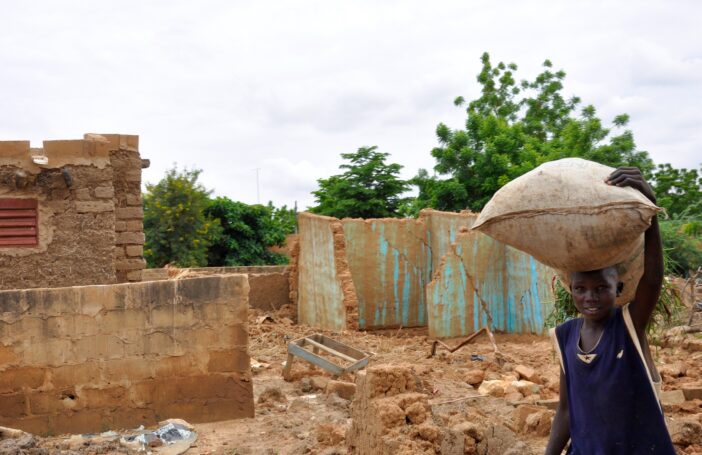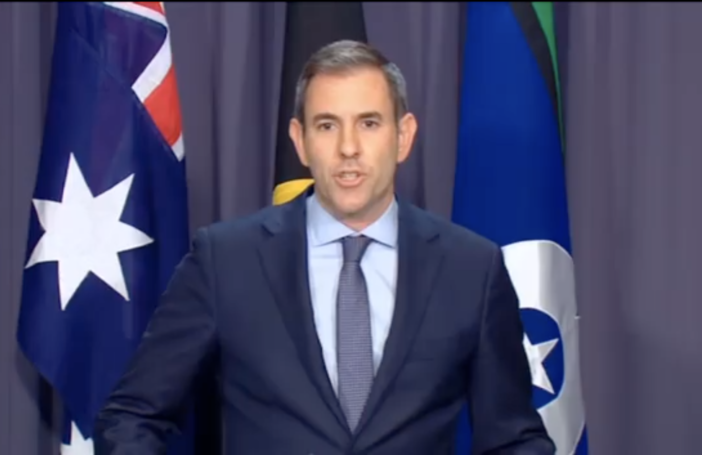In a post earlier this year we highlighted that since about 2006 public giving to international development NGOs has flatlined, just keeping up with inflation. We are now only giving nine cents in every $100 we have after tax to the overseas poor, down from 14 cents at the height of our generosity in 2004 and 11 cents in 2007. While we are still getting richer, we are also getting stingier.
It’s a dismal story, but what does it mean for individual NGOs? ACFID membership [pdf] has grown rapidly over the last few years, from under 80 members in 2008 to over 120 in 2014, but total AFCID income has not increased, so we have many more NGOs sharing an essentially static pie.
While the average ACFID NGO today must receive less from the public than five years ago, there are some big winners and losers. We focus here, as in our 2013 analysis, which ended in 2010/11, on the top 15 development NGOs ranked by their community donations in the most recent year for which we now have data, 2012/13. World Vision’s share is now steady at a third, and the other 14 are taking an increasingly large share, almost 50% by 2013. (Just a reminder that our universe is all ACFID-member NGOs plus two big non-ACFID development NGOs, MSF and Compassion. And that we are only looking at public donations, not government support.)
Figure 1: Share of donations over time – World Vision Australia (WVA) and others
 Note: Dataset and working available here.
Note: Dataset and working available here.
If we look just at the last two years — updating our earlier analysis, which finished in 2010/11 — we can see that most of the top 15 experienced growth, some very rapid growth. Note the recent fundraising success of the two UN agencies for refugees (UNHCR) and for children (UNICEF). Our 2013 analysis, identified seven high-growth or “insurgent” NGOs. Most of these enjoyed high growth in donations in the last two years as well. But Compassion and SCF are no longer in the high-growth group.
Figure 2: Growth between 2010/11 and 2012/13 (adjusted for inflation; in 2012/13 dollars): top 15 NGOs
 Most of the aid losers in the last two years are in fact outside of the top 15. As shown in Figure 3, the 12 of the top 15 NGOs that experienced an increase in donations in the last two years got a combined increase of $44 million. The three of the top 15 that lost saw a drop in donations of $25 million. And the NGOs outside of the top 15 saw a combined fall of $25 million as well. (Overall public donations to development NGOs fell over the last two years by $6 million.)
Most of the aid losers in the last two years are in fact outside of the top 15. As shown in Figure 3, the 12 of the top 15 NGOs that experienced an increase in donations in the last two years got a combined increase of $44 million. The three of the top 15 that lost saw a drop in donations of $25 million. And the NGOs outside of the top 15 saw a combined fall of $25 million as well. (Overall public donations to development NGOs fell over the last two years by $6 million.)
Figure 3: Winners and losers in the last two years (adjusted for inflation; 2012/13 prices)
 Figure 4 takes a longer term view of the changing ranking of Australia’s top development NGOs since the turn of the millennium. We use shares of donations to all development NGOs as our measure, and exclude World Vision from the figure (since it is singled out in Figure 1, and would require a very different scale). As Figure 1 shows, World Vision still stands alone in the development sector, though its dominance is reduced. There has been considerable churning among the 14 other top 15 NGOs. In 1999/2000 there were, in terms of public fundraising, five “second-tier” development NGOs: Oxfam, ChildFund, Caritas, Compassion and CBM, all with shares of about 4% or $15 million (in 2012-13 prices). In 2006/07, there were three second-tier fundraisers: Oxfam, Compassion and MSF, all with shares of 5% or $40-50 million. Today there are two: Compassion and MSF, both with a share in excess of 7% (or about $65 million). Oxfam is now a “third-tier” fundraiser alongside Fred Hollows (both with shares of around 5% or $43 million). ChildFund and Caritas have moved down into the fourth-tier.
Figure 4 takes a longer term view of the changing ranking of Australia’s top development NGOs since the turn of the millennium. We use shares of donations to all development NGOs as our measure, and exclude World Vision from the figure (since it is singled out in Figure 1, and would require a very different scale). As Figure 1 shows, World Vision still stands alone in the development sector, though its dominance is reduced. There has been considerable churning among the 14 other top 15 NGOs. In 1999/2000 there were, in terms of public fundraising, five “second-tier” development NGOs: Oxfam, ChildFund, Caritas, Compassion and CBM, all with shares of about 4% or $15 million (in 2012-13 prices). In 2006/07, there were three second-tier fundraisers: Oxfam, Compassion and MSF, all with shares of 5% or $40-50 million. Today there are two: Compassion and MSF, both with a share in excess of 7% (or about $65 million). Oxfam is now a “third-tier” fundraiser alongside Fred Hollows (both with shares of around 5% or $43 million). ChildFund and Caritas have moved down into the fourth-tier.
Figure 4: Proportional share of donations among top 15 NGOs, excluding World Vision
 Note: Data for asterisked NGOs start in 2003/04. For these NGOs, the 1999/2000 bar shows 2003/2004 data and the annualised growth rate is instead for the 2003/2004–2012/13 period.
Note: Data for asterisked NGOs start in 2003/04. For these NGOs, the 1999/2000 bar shows 2003/2004 data and the annualised growth rate is instead for the 2003/2004–2012/13 period.
This analysis raises a number of questions. There is the awkward reality that the second and third largest development NGOs in Australia (MSF and Compassion) are becoming increasingly important but choose not to be members of the peak body, ACFID (for reasons that require a separate post). And for NGOs more generally, there is the question of whether the churning we observe is a zero-sum game. The fact that some NGOs are charging ahead with their fundraising while total giving is flat does not necessarily mean that those who are thriving are doing so at the expense of those who are struggling, but this must certainly be a risk.
Jonathan Pryke is a Research Officer, and Stephen Howes is the Director of the Development Policy Centre.
Note: WWF appears in the ACFID data as one of the top 15 fundraisers among ACFID members, but is excluded from this analysis as the majority of their funding from the community is directed to domestic campaigns. Its funds are, however, still included in the ‘total’ amount of community funding to development NGOs.
The NGO ladder – top 15 development NGOs (by community contributions) 2012/13
- World Vision Australia
- Compassion Australia
- Médecins Sans Frontières
- Oxfam Australia
- The Fred Hollows Foundation
- ChildFund Australia
- Save the Children Australia
- PLAN International Australia
- Global Development Group
- UNICEF Australia
- Caritas Australia
- Australia for UNHCR
- CBM Australia
- CARE Australia
- Opportunity International Australia





This is interesting; but a couple of points from my own research. As a % of GDP aid from NGOs has been remarkably stable at around 0.03% for the last fifty years. It has gone up (to as much as 0.08%, but is now back to about 0.04%) in the last 10 years following the tsunami effect. In sense it depends on your base year to determine grimness. The ABC story chose 2004 to show things as being particularly grim, but that was an abnormally ‘good’ year. It is in line with the long run levels. It is the attitude to aid that has tanked and is a real issue, which is another story about the drop off in development education spending since the 1990s.
The rise in ACFID membership is really about associate members being abolished (2010 I think?) and them all being full members to be able to sign the Code If we count the associate and full members over the last forty years the change had not been that great. There are both definitional and baseline issues in this analysis.
G’day Jonathan,
First time caller, long time listener.
I’m fascinated to know your thoughts on why MSF and Compassion choose not to be part of ACFID.
Does it really matter?
Do they need to be part of ACFID?
Cheers!
Global Development Group is a surprising one? Not a major presence on the web or in media, little interaction with peer agencies in the sector, no obvious dedicated constituency, no clear point of differentiation from other aid NGOs in their approach – and yet shooting up the fundraising charts, from a low base. Is it because they’re the only aid NGO in Queensland?
GDG is also an umbrella entity from memory that provides tax-deductibility to smaller NGOs? If so – may reflect a proliferation in activity at that level.
I am curious why Red Cross was not included in this assessment? I realise that they are not really an NGO but an ancilliary to goverment, but would have thought that they fitted into analysis of this nature, and would sit in the top 15, even top 5?
Hi Phil,
Thanks for your comment. Red Cross is included in the analysis, but we had to make some special calculations with their funding to isolate funding used for development expenditure. While they are a huge NGO, the lion’s share of their expenditure is actually on domestic causes, not international development. WWF sits in the same camp, and we also excluded it for the same reason: once you isolate its development expenditure it falls outside the top 15.
Cheers,
Jonathan
This is very interesting article – thanks! Is there any similar article/data set about the distribution of private donations in USA and/or Europe?
Hi Jasmina,
That’s something we are interested in looking into. I haven’t stumbled across anything yet but would be very grateful if anyone could steer us in the right direction!
Regards,
Jonathan